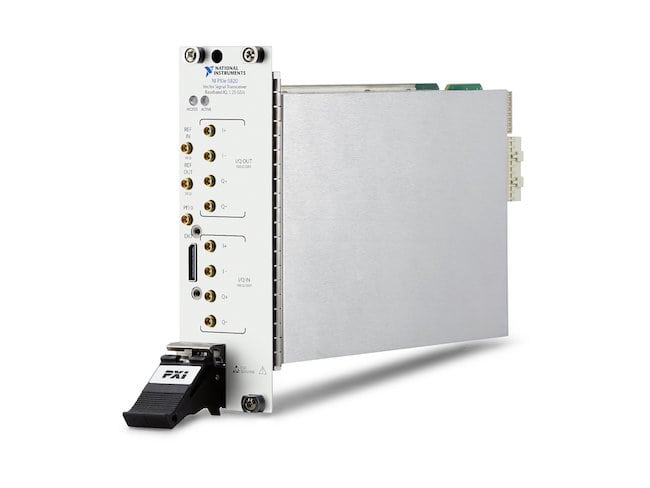
The PXIe-5820 module is the industry’s first baseband VST with 1 GHz of complex I/Q bandwidth and is designed to address the most challenging RF front-end module and transceiver test applications. Photo courtesy of NI
Platform-based test equipment supplier National Instruments (NI), has introduced a baseband model of its second-generation Vector Signal Transceiver (VST). The PXIe-5820 module is the industry’s first baseband VST with 1 GHz of complex I/Q bandwidth and is designed to address the most challenging RF front-end module and transceiver test applications, such as envelope tracking, digital pre-distortion and 5G test.
“In 2016, NI disrupted the industry by introducing the RF model of our second-generation VST with 1 GHz of instantaneous bandwidth,” said Charles Schroeder, VP of RF and wireless at NI. “We’re continuing the disruption with the baseband model of our second-generation VST. Engineers can use the baseband VST with LabVIEW system design software to address the evolving and changing needs of transceiver test applications.”
The PXIe-5820 combines a wideband I/Q digitizer, wideband I/Q arbitrary waveform generator and high-performance user-programmable FPGA into a single 2-slot PXI Express module. With 1 GHz of complex I/Q bandwidth, the baseband VST suits a wide range of applications including baseband I/Q testing of wireless and cellular chipsets as well as envelope tracking of digitally pre-distorted waveforms for power amplifier, and generation and analysis of new wireless standards such as 5G, 802.11ax and LTE-Advanced Pro.